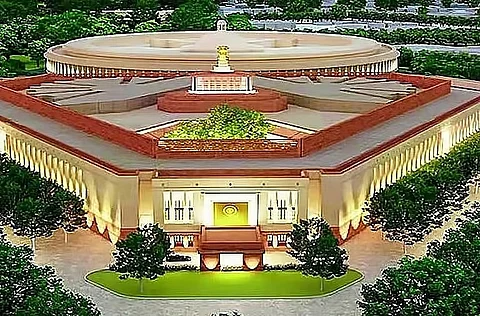

India faces a significant fodder deficit, with shortages ranging from 11.24% to 32% for green fodder and 23% for dry fodder, as reported by Union Minister S P Singh Baghel.
Additionally, Lumpy Skin Disease and bird flu outbreaks have affected multiple states, while advancements in nuclear medicine and renewable energy initiatives are underway, according to parliamentary discussions.
India is deficit in fodder, S P Singh Baghel, Union minister of state for fisheries, animal husbandry and dairying told the Rajya Sabha on July 30, 2025.
There is deficit of 11.24-32 per cent and 23 per cent for green and dry fodder respectively in the country, according to the ICAR- Indian Grassland and Fodder Research Institute (IGFRI), Jhansi, Baghel added.
Lumpy Skin Disease (LSD) has been reported in 10 states during 2025, namely Andhra Pradesh, Kerala, Tamil Nadu, Telangana, Gujarat, Madhya Pradesh, Assam, Mizoram, Maharashtra and Karnataka.
Active cases are presently reported only in the state of Maharashtra, Baghel told the Rajya Sabha.
Outbreaks of avian influenza (bird flu) in domestic poultry have been reported in 10 Indian states till July 24, 2025. These are Maharashtra, Chhattisgarh, Jharkhand, Andhra Pradesh, Madhya Pradesh, Telangana, Karnataka, Bihar, Uttar Pradesh and Odisha, Baghel told the Rajya Sabha.
Nuclear energy has the potential to be applied in the health sector for advanced treatment of various ailments.
Diagnostic nuclear medicine in India is practiced through Single Photon Emission Computerized Tomography, Positron Emission Tomography and Computerized Tomography. They help in staging, restaging and response evaluation of cancer.
There is availability of nuclear medicine facilities in the country in government and private sector. There are more than 500 such facilities available, Jitendra Singh, Union minister of state for personnel, public grievances and pensions and the Prime Minister’s Office told the Lok Sabha.
The Department of Biotechnology (DBT) has undertaken initiatives to nurture and develop 3D tissue models like organoid models or in-vitro systems-3D printed models for potential applications in cell therapy, pre-clinical models for drug discovery and in-vitro cell-based models to understand disease pathophysiology.
One of DBT autonomous institutes—iBRIC-inStem— is developing 3D tissue and organoid models to test and quantify the developmental toxicology of new chemical entities that could enable drug discovery programs by eliminating the use of animal models for studying the developmental toxicity. However, DBT has not yet developed protocols for validation of non-animal alternatives, Singh told the Lok Sabha.
The government has been continuously updating and expanding the meteorological observation network consisting of Automated Weather Stations (AWS) and Doppler Weather Radars (DWRs) in Tamil Nadu, including its flood-prone coastal districts such as Chennai, Cuddalore, and Nagapattinam.
Currently, there are 65 AWSs and 80 Automatic Rain Gauge (ARG) stations in the state covering all 38 districts. In the flood-prone coastal districts of Chennai, Cuddalore, and Nagapattinam, there are 3, 3, and 2 AWSs, respectively, and 5, 2, and 1 ARGs, respectively, Singh told the Lok Sabha.
Government has taken several initiatives and has been implementing various schemes/programmes for promotion and development of renewable energy in the country including Madhya Pradesh.
As on June 30,2025, a total of 11,279.39 MW electricity capacity from different renewable energy sources such as solar (5570 MW), wind (3195.15 MW), bio power (155.46 MW) and hydro power (2358.71 MW), has been installed in Madhya Pradesh.
Under the scheme for “Development of Solar Parks and Ultra-Mega Solar Power Projects”, the government has sanctioned eight solar parks of aggregate capacity 4248 MW in Madhya Pradesh, Pralhad Joshi, Union minister of new & renewable energy and consumer affairs & food and public distribution told the Lok Sabha.
As per the SDG India Index 2023-24, India’s overall SDG score has improved from 66 in 2020-21 to 71 in 2023-24. There has been improvement in the parameters of poverty, decent work and economic growth, quality education, healthcare, and other related parameters in recent years, Rao Inderjit Singh, minister of state of the Union Ministry of Statistics and Programme Implementation told the Lok Sabha.
There are some media reports and research studies indicating that certain women sugarcane workers, particularly from Beed district of Maharashtra, have undergone hysterectomies. However, health being a state subject under the Seventh Schedule of the Constitution of India, such incidents primarily fall under the purview of the state government.
The Government of Maharashtra has informed that all the hysterectomy surgeries in Beed district among female sugarcane labourers are monitored. The hysterectomy surgeries are being done after mandatory pre-approval from the District Civil Surgeon, Beed and Medical Superintendent of respective areas, in both government and private facilities.
Surgeries are allowed only after detailed gynaecological examination and clinical justification such as uterine fibroids or abnormal bleeding.
In the last two harvest seasons from the year 2022 to March 2025, a total of 211 hysterectomies were performed in Beed district with due medical indications and prior approval, Savitri Thakur, minister of state in the Union Ministry of Women and Child Development told the Rajya Sabha.